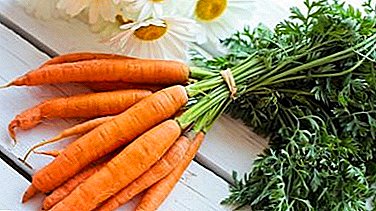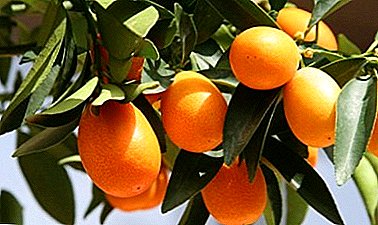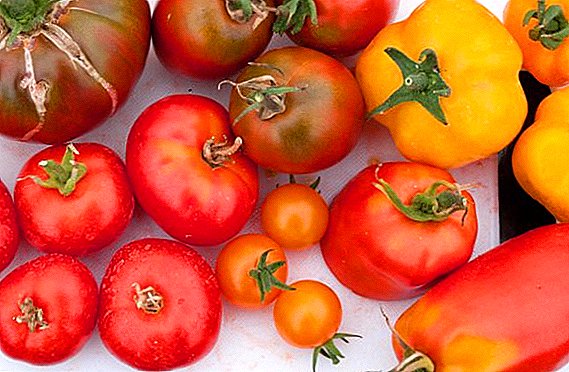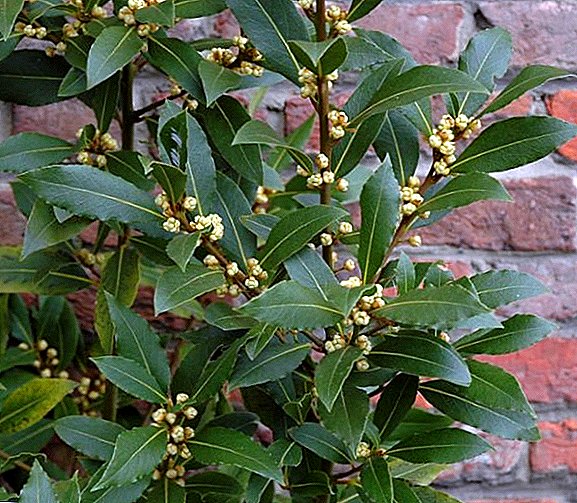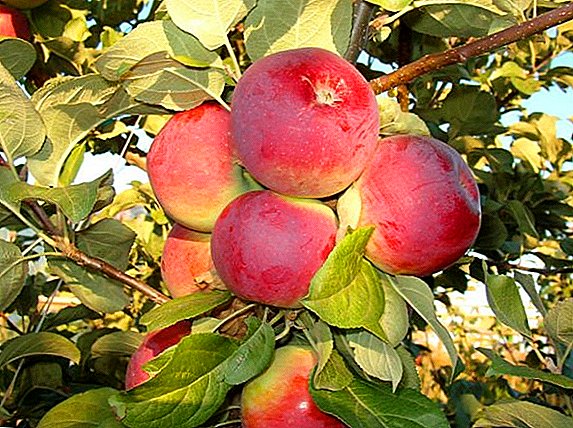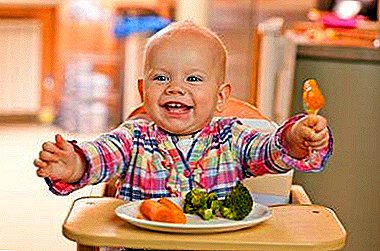
No other vegetable can boast such a wide variety of species like cabbage. White, red, Peking, broccoli - and this is not the whole list.
Despite the many beneficial properties, cabbage can be harmful, especially for young children. In particular, many parents are afraid of white cabbage, which causes swelling of the intestines in children. Let's try to sort out all the pros and cons of using this crop and see when the children can start to give this vegetable.
Why it is worth limiting the use of this vegetable kids?
"There is medicine in a spoon, poison in a cup." This famous statement applies not only to medical preparations, but also, in a certain way, to products. What may be useful in small doses will be harmful if abused.
Children's body is especially sensitive to various stimuli. In the first years of life, you should carefully consider the presence of cabbage in the diet, because it:
- When used in large quantities leads to abdominal pain, flatulence and problems with the chair (as to constipation, and diarrhea).
- The coarse fiber contained in cabbage can irritate the mucous membrane of the gastrointestinal tract (GIT), which leads to abnormalities in the digestive system.
- May cause allergies. The risk of this problem is minimal, but it also cannot be excluded. A high content of histamine can provoke a pseudo-allergic reaction when allergy symptoms occur.
When is it allowed to give?
We gradually moved to a very important question - from what age can this child be given to a child. In the diet of children, cabbage should appear no earlier than six months of life. The optimal age is 5 months if the baby is fed with mixtures, and 6 months for those babies who are fed by their mothers.
White cabbage is better to start giving the child after the color and Brussels sprouts (about 7-8 months). Pre-worth it is also to "acquaint" the child with other vegetables - zucchini, carrots, pumpkin, potatoes.
Children are strictly not recommended to give fried cabbage. So work for your child to cook this vegetable for a couple or to bake. You can also cook it, including add it to soup, borscht or vegetable stew.
As for fresh cabbage, it can be introduced into the baby’s diet not earlier than 3 years. At the same time, the child should not have problems with the digestive tract (meaning diseases like gastritis and pancreatitis). It is also worth teaching the child to chew cabbage carefully, without swallowing it in large chunks.
Important! Dedicated to lovers of cabbage stalk. It is strictly forbidden for children to eat it, since various harmful compounds can accumulate in the stalk when the cabbage is ripening.
Types of vegetable and the age at which it can begin to use
Broccoli

The first feeding of the baby with cabbage is made to begin with broccoli. This representative is the most harmless for the body crumbs. Such cabbage almost never causes colic or flatulence in a child. At the same time, broccoli contains approximately 3 times more vitamin C and protein than in albumen. Moms should acquaint their baby with this type of cabbage, and only then accustom him to others. But in the case of this vegetable should not be zealous.
Belokochannaya

The most popular and common type of cabbage in our society. From what age do they give white cabbage to children? As already mentioned, it can not be entered into the diet of a child up to 7-8 months and without first introducing other vegetables into the diet. White cabbage first should be used as an additive to vegetable puree from other ingredients.
Recommendation. Carefully look at how the baby's body reacts to the cabbage. In which case the lure this vegetable is on time to cancel.
We have already said that white cabbage can cause meteorism and colic in the crumbs, and sometimes even allergies. Undoubtedly, the benefits of the use of this variety are also quite a few. In particular, the "classic" Cabbage contains a huge amount of vitamins and minerals, vitamin U occupies a special place. It also contains cellulose and pectins, and cabbage juice produces enzymes and improves intestinal motility, which contributes to better digestion.
Brussels

In the diet of the baby Brussels should appear no earlier than 7 months of age. It should be introduced into the diet before the albumen, the close “relative” of which it is. Brussels sprouts are rich in ascorbic acid and riboflavin (vitamin B2). However, it also contains a lot of fiber, which may not in the best way affect the health of the baby and cause him swelling.
Sea

Can sea kale be eaten by children under one year old? Strictly speaking, this product does not apply to vegetables and is not cabbage at all. Sea kale is a kelp food product. And the child should appear in the diet only after he reaches the age of 3, but even then he should be given in limited doses.
Sea kale is most appreciated due to its high iodine content. It also contains many vitamins, minerals, organic acids and amino acids.
Pickled

Like sea kale, fermented must appear in the diet of a child after 3 years. Sauerkraut is primarily a high content of vitamins B, A, ascorbic acid, and minerals. It also contains a lot of fiber and vegetable protein. However, when preparing it, a lot of salt is used, which is extremely undesirable for children. Sometimes vinegar is also used, which is contraindicated in babies.
Useful and harmful properties
Benefit:
- regulates bowel activity;
- increases the secretion of gastric juice, improves appetite;
- relieves the body of toxins, prevents the deposition of fat and cholesterol;
- activates metabolic processes and blood flow;
- strengthens blood vessels, promotes the outflow of fluid (relieves swelling);
- contains a large amount of vitamins of various groups, miners, amino acids.
Harm:
- may cause an allergic reaction;
- abuse may cause bloating, colic, constipation or diarrhea;
- able to irritate the gastrointestinal mucosa;
- sauerkraut contains a large amount of salt, sometimes - vinegar, prohibited for children.
Allergy
Perhaps the main disadvantage of cabbage use by babies is the possibility of developing allergies. This happens quite rarely, but you should not exclude an allergic reaction.
Symptoms of a cabbage allergy can appear within a few minutes., after the child eats a vegetable, and can - a few hours after the allergic person has eaten cabbage.
Important! The release of histamine into the blood leads to swelling, tingling and itching in the mouth, tongue, lips and face. Also observed swelling, redness and inflammation of the skin.
These symptoms can completely develop into a skin rash and other more serious skin lesions.
Usually, the symptoms of cabbage allergy do not pose a particular health hazard, but in rare cases anaphylaxis is possible - a reaction that is life-threatening.
Whatever the symptoms of allergy, you should consult a doctor as soon as possible. Avoid self-medication!
To prevent the recurrence of an allergic reaction, first of all, of course, cabbage should be excluded from the diet. In addition, it is recommended to analyze for allergens. Many experts generally do not advise doing this analysis up to 3 years, since it is not informative. However, the crumbs will not be harmed, so it’s worth a try.
After exploring the types and properties of cabbage, it can be said with certainty that the benefits of its use by both children and adults are much more than harm. However, the child's body may react to products differently than an adult, so you should start feeding the cabbage with caution. We wish you confident and easy to go the difficult way of introducing new products into the diet of the crumbs.



